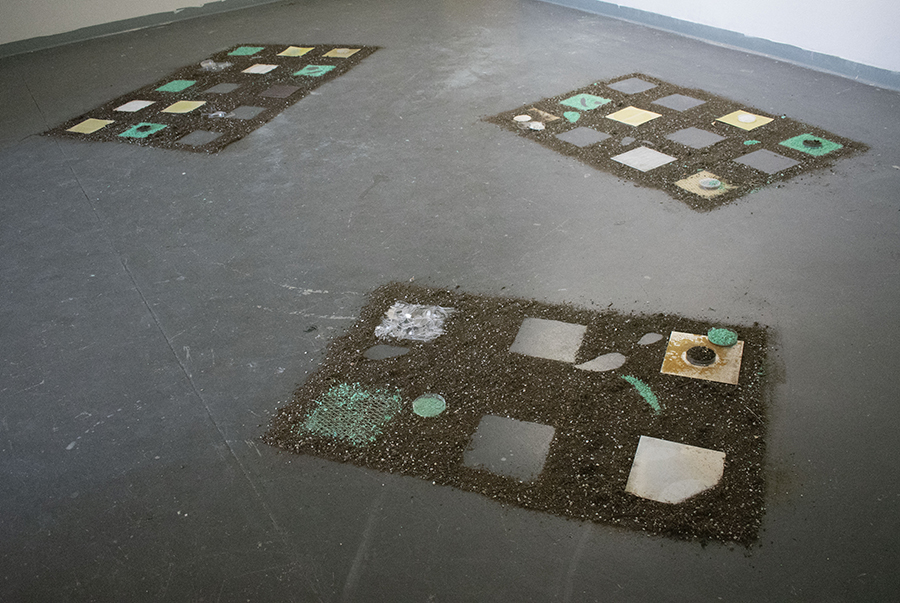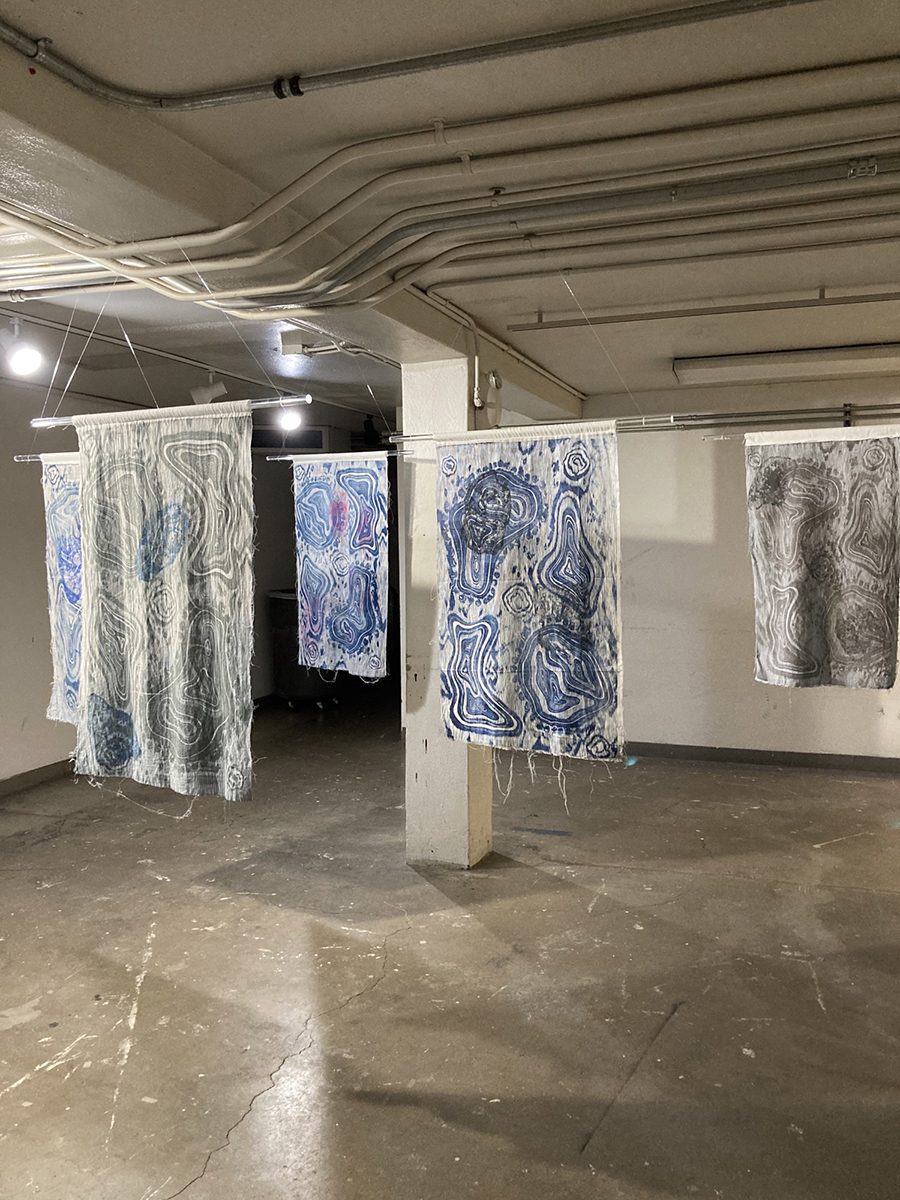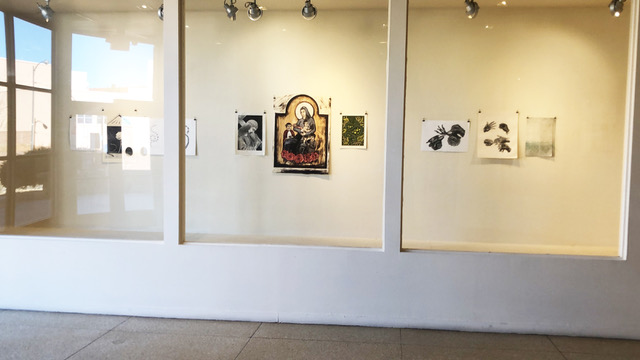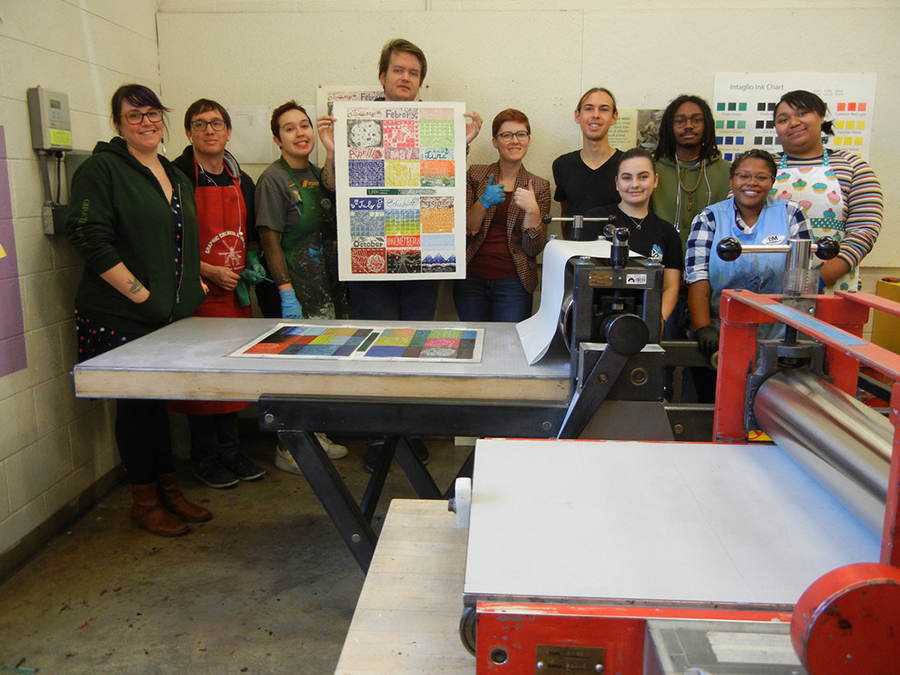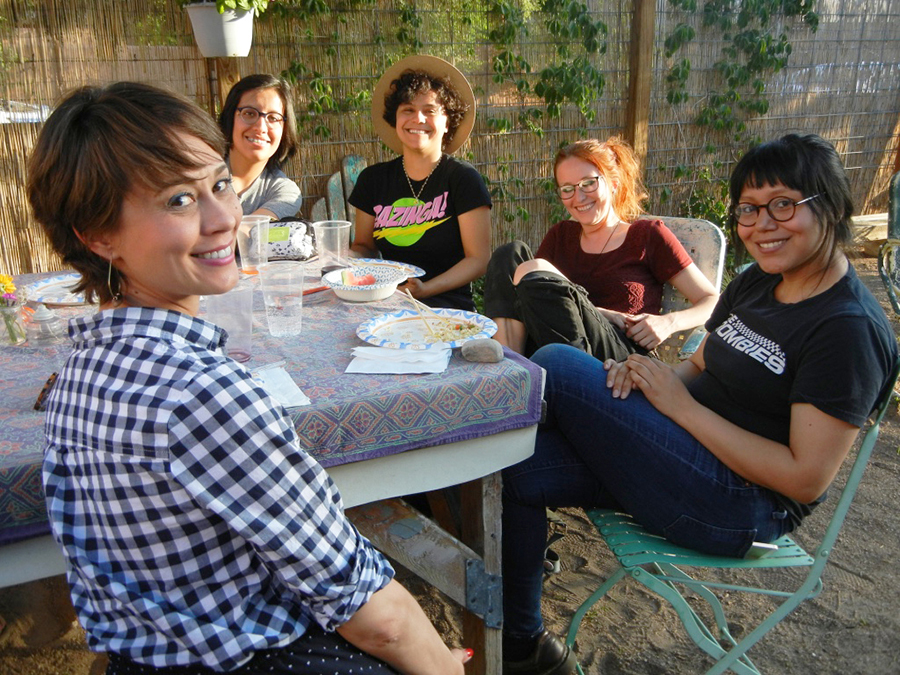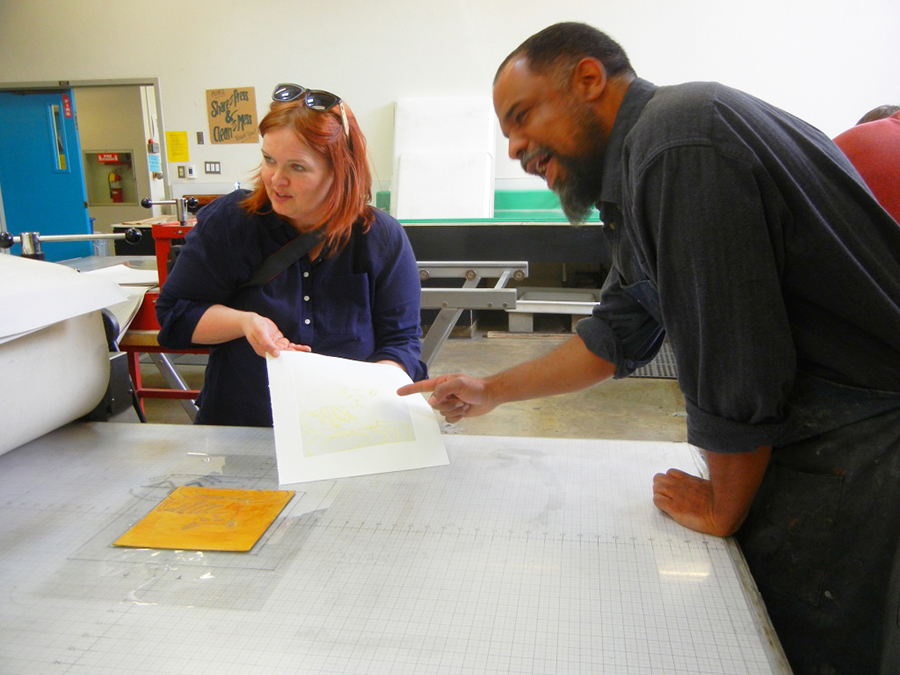Karsten Creightney grew up in Albuquerque, New Mexico. He received his BA from Antioch College, 2000. He completed the Tamarind Institute’s Professional Printer Training Program in 2001, and received his MFA from UNM, 2011. Creightney works in multiple media combining prints, paint, photographs...
PRINTMAKING
Printmaking has provided the historical frame through which all artistic media are referenced and disseminated, in addition to being a distinctive art form in its own right.
The UNM Printmaking Area offers instruction in various print mediums – including Intaglio, Lithography, Monotype, Relief, Serigraphy, and Digital Processes. Besides traditional Printmaking, students are also challenging the medium’s role in the larger context of contemporary art through interdisciplinary concerns and innovation. Unique to UNM is the Collaborative Lithography course taught in partnership with the world-renowned Tamarind Institute of Lithography. During this course, printer trainees at Tamarind collaborate with UNM students to print multiple lithographic editions. In addition, the Printmaking Area has offered annual community outreach projects and has collaborated with many different groups, including public schools and non-profit, social welfare organizations, both nationally and internationally. There is a large group of printmakers in the Southwest and UNM Printmaking serves an important leadership role to this community.
Undergraduate Degree
BFA | 4-Year Program and BA | 4-Year Program
The Bachelor of Fine Arts in Art Studio is designed for students who anticipate to become a professional fine artist. Admission to the Bachelor of Fine Arts is by portfolio. For all B.F.A. students, completion of ARTS 1220 Art Practices I, and ARTS 1230 Art Practices II (with grades of “C” or better) are required prior to their admission or readmission to the College of Fine Arts as a declared major.
The curriculum for the Bachelor of Arts (B.A.) in Art Studio is less specialized than the pre-professional (B.F.A.) curriculum.
Graduate Degree
MFA | 3-Year Program
The Master of Fine Arts (M.F.A.) degree in Art Studio student can focus on painting and drawing, photography, printmaking, art and ecology, electronic arts, or 3D. All students admitted to the graduate studio program are given studio space on campus. Admission is selective and limited by the number of studio spaces available. The art studio printmaking program is recognized by the Western Interstate Commission on Higher Education (WICHE) for inclusion in their Out-of-State Programs at In-State Tuition. Qualified residents of the 15 participating states in the Commission may enroll at reduced tuition rates in the program.
Courses
Introduction to Printmaking
ARTS 1710 Introduction to Printmaking
This course provides a hands-on experience for exploring basic printmaking processes, including relief, intaglio, lithography and monotype processes, as well as investigating materials, tools, techniques, curation processes, and print shop safety. Emphasis is given to examine individual concepts through various printmaking mediums. Introduction to Printmaking is a prerequisite course for the intermediate and advanced printmaking courses. Drawing I is the prerequisite course for the Introduction to Printmaking.
Relief Printing
ARTS 336 Relief Printmaking
ARTS 436 Relief Printmaking
ARTS 536 Graduate Relief Printmaking
Relief printing is the oldest print medium. It is a reductive process in which the non-image areas of a matrix, most often wood or linoleum, are carved away. The remaining flat, raised surfaces constitute the image area and receive the ink that is ultimately transferred to paper under pressure. Most people are familiar with some form of relief printing – a common example would be a rubber stamp, though one could even think of fingerprints as tiny relief prints.
Intaglio
ARTS 337 Intaglio Printmaking I
ARTS 437 Intaglio Printmaking II
ARTS 537 Graduate Intaglio
Intaglio is an umbrella term that refers to a variety of printmaking techniques, including drypoint, engraving, etching, aquatint, spit bite, mezzotint, and photopolymer printing. In intaglio processes, the matrix, most commonly a metal plate, is gouged either manually (with hand tools) or chemically (using a corrosive material). Unlike in relief printing where the ink sits on the raised surface of the matrix, the ink comprising the image of an intaglio print sits within the gouged or recessed areas of the plate and the flat surface is wiped clean. The intense pressure of a printing press forces the dampened paper into the recessed marks, releasing the image from the matrix.
Lithography Printing
ARTS 338 Lithography
ARTS 438 Advanced Lithography
ARTS 538 Graduate Lithography
Lithography is a planographic printmaking technique meaning that the surface of either the limestone or aluminum matrix used remains completely flat. Unlike in relief and intaglio, where a change in the elevation of the matrix determines where the ink goes, in lithography, this separation between image and non-image areas is achieved by chemically altering the surface based on the principle that oil and water do not mix. Lithography is one of the most direct and autographic printmaking techniques, allowing artists to develop their imagery very much as they would in a drawing or painting.
Serigraphy
ARTS 339 Serigraphy
ARTS 439 Serigraphy
ARTS 539 Graduate
Serigraphy, also known as screen-print or silkscreen, was developed in the past century making it the newest of the four main print techniques taught at UNM, although its basic origins are ancient. Serigraphy essentially involves making a stencil, which humans have done for thousands of years. Today, serigraphy is not only used to create art on paper but is perhaps most commonly employed in the creation of imagery on textiles. Almost all of the T-shirts and patterned fabrics that we own and see every day are created using serigraphy.
Advanced and Graduate Printmaking
ARTS 474 Advanced Printmaking
ARTS 574 Graduate Printmaking
This is a combined studio and seminar course. While students can be a specialist of one or two printmaking mediums, they will challenge themselves by combining multiple printmaking techniques, installation, or other art mediums. The development of personalized direction and giving/receiving critiques are emphasized. The discussion, reading materials, and exploration of various contemporary printmaking techniques and concepts are given. Students will also prepare to complete their portfolio, artist talk, demonstration, CV writing, and artist business.
Collaborative Lithography
FACILITIES
- 3 Takach etching presses, 72” x 39.5”, 60” x 33.5”, 36.5” x 17.5”
- A rosin box and spray paint booth for aquatint technique
- Ferric Chloride and copper sulfate baths are provided
- 3 Takach lithography presses, all 56” x 33”
- 1 Takach tabletop lithography press, 36” x 24”
- The limestone library is home to 80+ stones including several large 40” x 30” stones
- 1 Silkscreen exposure unit
- 1 vacuum table, 30” x 48”
- 72” x 48” x 24” spray booth
- 2 NuArc exposure units with the maximum capacity of 30” x 48” for Photolithography and Photo intaglio

- 4 Mac workstations
- 2 Epson scanners, including an Epson 10000XL
- 2 Large-format ink-jet printers, Epson 4880 and T5270
- 3 laser printers, HP 4015, HP 700M712, Brother HL 2240D
- 1 Takach etching press, 60” x 33.5”
FACULTY
Yoshiko Shimano
Professor
Japanese-born, Yoshiko Shimano challenges to transform the paper so it no longer speaks as “paper”, but has a density of physical presence that is one with its imagery. By using many different printmaking...
LAB MANAGER
Brooke Steiger
Manager, Printmaking Lab
An interdisciplinary artist working in two- and three-dimensions, Brooke Steiger was born in Denver, Colorado, and raised...
MFA WORK
UNDERGRAD WORK
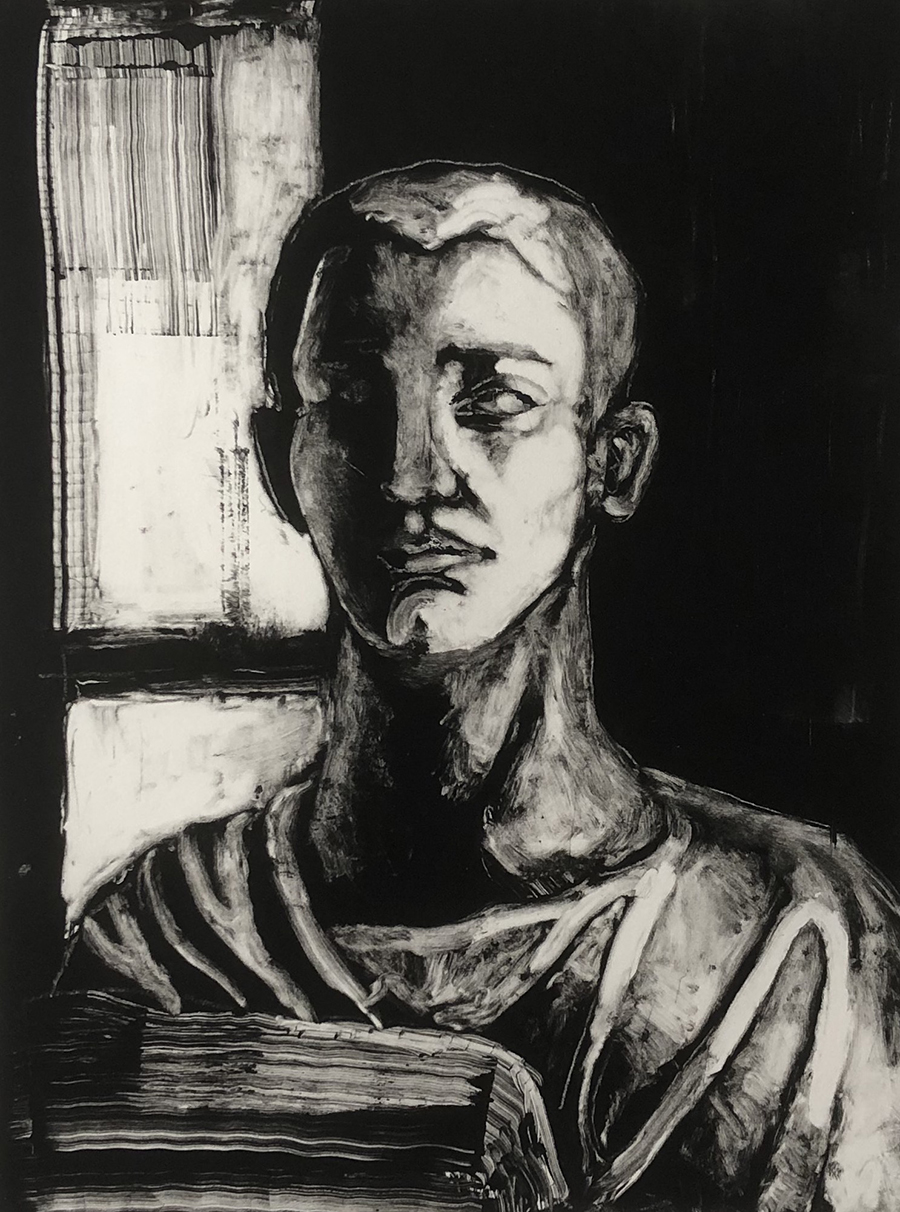
Sam Snell, Uffizi Statue Monoprint 2020 
Robert Swanberg, Harvested Selfhood Color Lithograph and Watercolor 2020 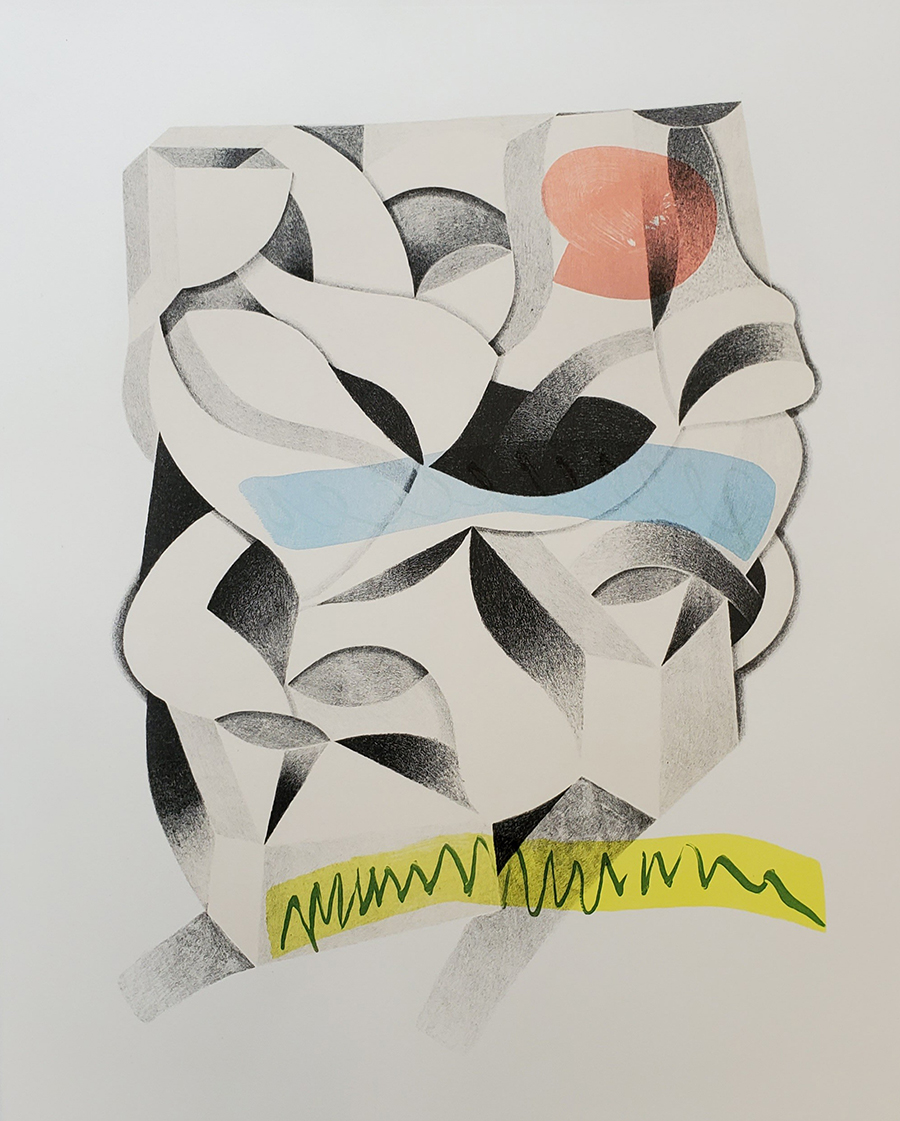
Michael Schultze, Papercut #1 Lithograph 2020 
Mckenna Donaldson, Dissociated Lithograph and Reduction Linocut 2018 
Katherine Overton, Untitled Woodcut 2019 
Kate Coucke, Still Life # 1 Monotype Linocut and Chine-Collé 2018 
Jacob Gutierrez, Child Lithograph 2021 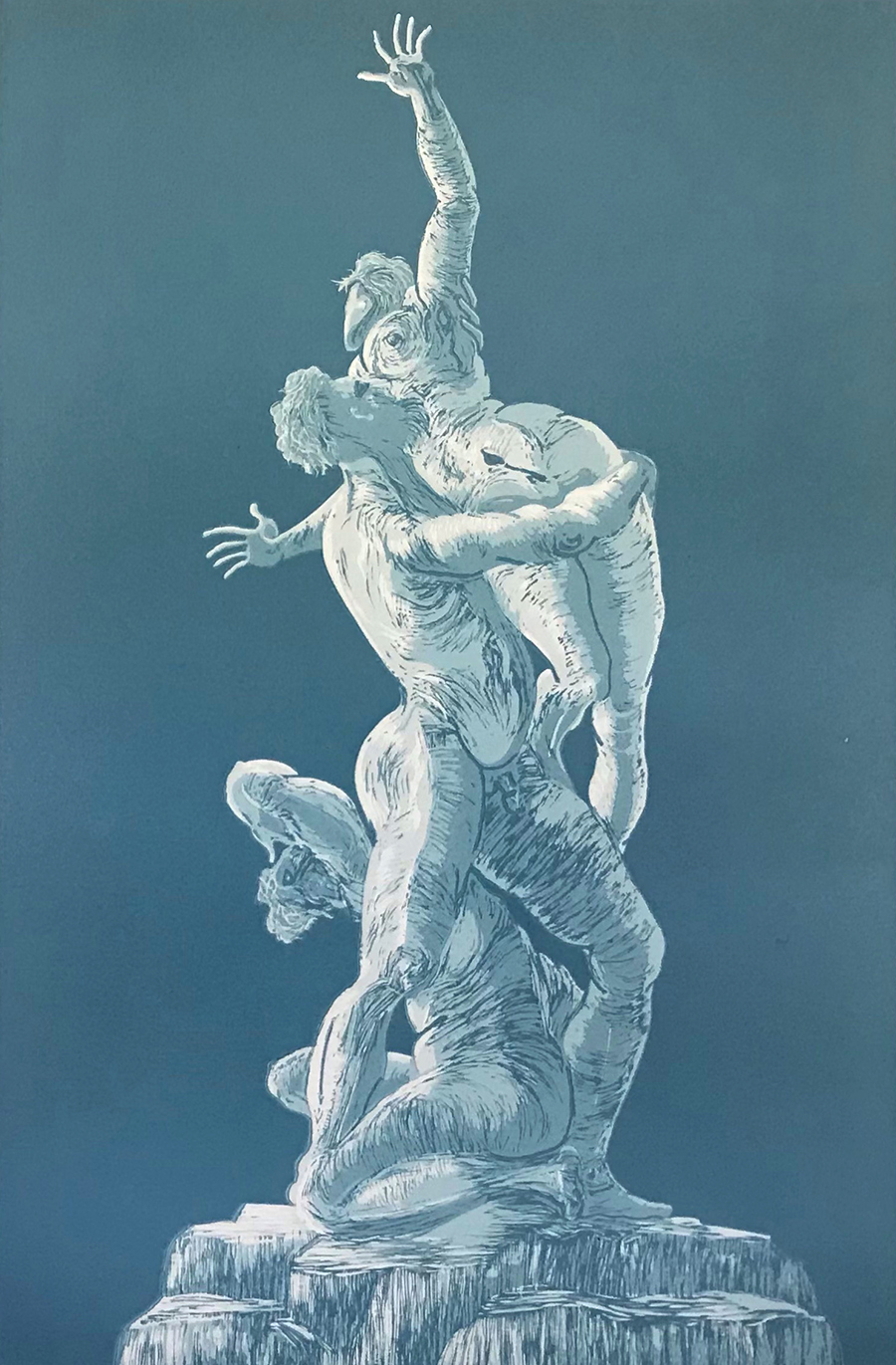
Hiroshi Sutter, After Andreani Blue Reduction Linocut 2021 
Chloe Brennan, Hum Lithograph 2021










